Adopting a dog is a significant step that involves more than just the emotional readiness to add a new member to your family. There are legal steps you must go through to ensure that everything is above board and officially documented. As a potential dog owner, you’ll encounter several legal forms and agreements during the adoption process.
This documentation is vital for both your and your new companion’s protection and provides a clear record of the commitment you’re making.

Before bringing home your new dog, it’s important to understand the various legal documents that you will be required to sign. These can include an application form, an adoption agreement, and sometimes a spay/neuter agreement. These documents serve different purposes, such as assessing your suitability as a pet owner, outlining the responsibilities you are agreeing to, and ensuring the dog’s welfare.
Each shelter or rescue organization will have its own set of required paperwork, but understanding these common documents will help you navigate the adoption process smoothly.
Key Takeaways
- Legal documents are required to officially adopt a dog and protect all parties involved.
- Adoption paperwork typically includes application forms, adoption agreements, and spay/neuter contracts.
- Familiarizing yourself with the necessary documents facilitates a smoother transition for both you and the dog.
Essential Legal Documents for Dog Adoption
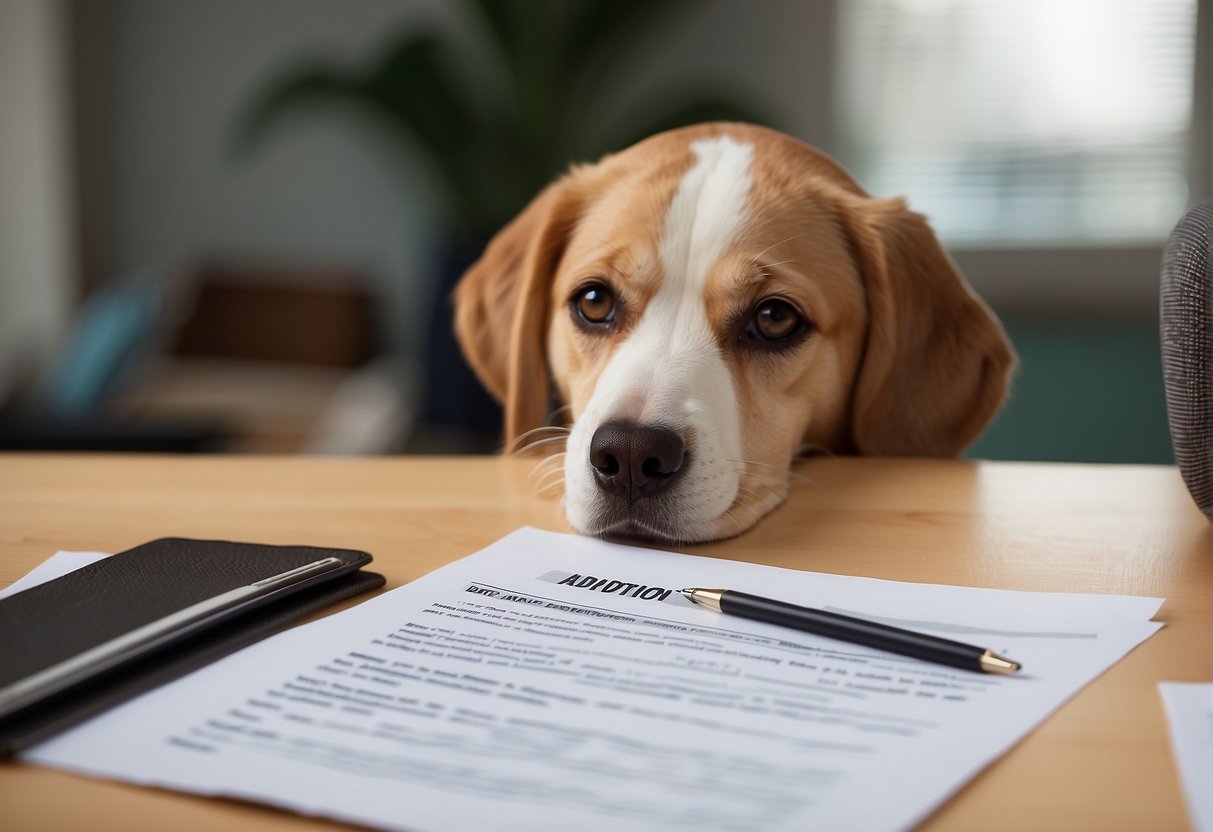
When you decide to adopt a dog, there’s some important paperwork involved. These documents are not only needed for the legal side of things but also ensure the health and well-being of your new buddy.
Adoption Application Form
Before you can take your dog home, you’ll fill out an Adoption Application Form. This form gathers your basic information like your name and address. It also asks about your living situation and why you want to adopt. It’s kind of like a job application but for taking care of a dog. Some places might do a background check to make sure you’re ready for a dog.
Adoption Agreement
The Adoption Agreement is a contract between you and the adoption agency. It says that you’re going to take good care of the dog. This includes giving them the right food, plenty of exercise, and lots of love. Also, it usually lists the adoption fees, which help cover the shelter’s costs.
Spay/Neuter Agreement
One key part of adopting a dog is agreeing to the Spay/Neuter Agreement if it hasn’t already been done. This paper says that you agree to have your dog spayed or neutered. This is super important to prevent unexpected puppies and helps keep the pet population in check.
Veterinary Records
When you adopt a dog, you’ll get their Veterinary Records. This paperwork is all about the dog’s health. It tells you if they’ve had their shots, what kind of vaccinations they’ve had, and any other medical care they’ve received. Keeping these records safe is important for future vet visits.
Microchip Registration Form
Next up, there’s the Microchip Registration Form. If your dog has a microchip for identification, this document will help you register it in your name. That way, if your dog ever gets lost, you can be reunited more easily.
Transfer of Ownership Document
The final piece is the Transfer of Ownership Document. This is when the shelter officially hands over the dog’s ownership to you. It’s a big moment! You’ll want to keep this safe because it’s proof that your pup is legally yours.
Navigating the Adoption Process
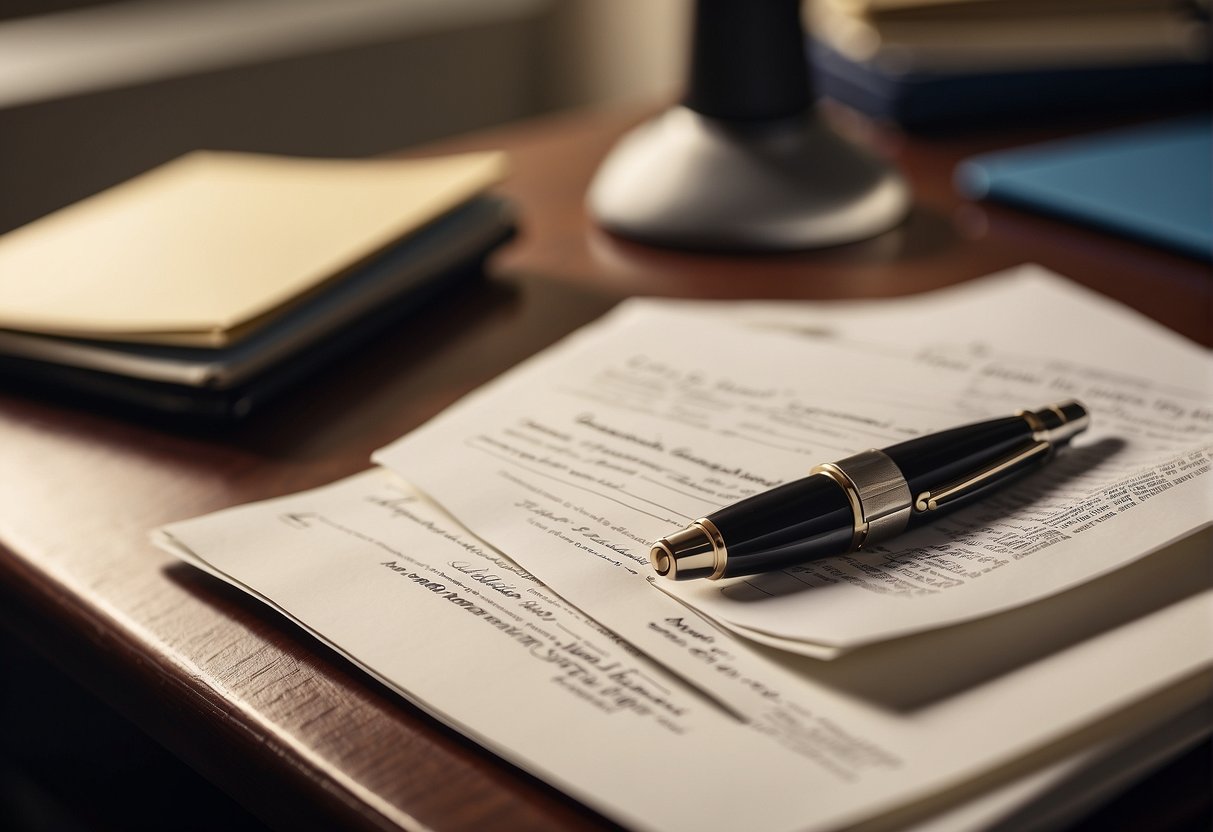
When you decide to adopt a dog, there’s a series of legal steps you have to follow to make the pooch a part of your family legally. Let’s go through them one by one.
Initial Screening Procedures
To start off, adoption agencies usually have a screening process to make sure you’re a good match for a dog. You’ll fill in an application asking about your living situation, lifestyle, and previous pet experience. They’ll want to know if you have other pets at home and how you plan to integrate your new dog into the family.
Meetings and Visits
Next, you’ll get to meet the dogs! This could be at the shelter or foster homes. Home visits might also be arranged so the agency can see where your new dog will be living to ensure it’s a safe and welcoming environment. This visit also helps them to advise on any changes you might need to make before your new dog arrives.
Finalizing the Adoption
Finally, there’s the finalization of the adoption. Adoption costs vary, and once paid, you’ll have some final paperwork to sign. State law usually requires this part of the adoption process to be overseen by an attorney. Then, a court hearing is set where a judge will officially approve the adoption. Once the gavel falls, congratulations are in order because you officially have a new member of your family!
The Role of Animal Shelters and Rescue Organizations
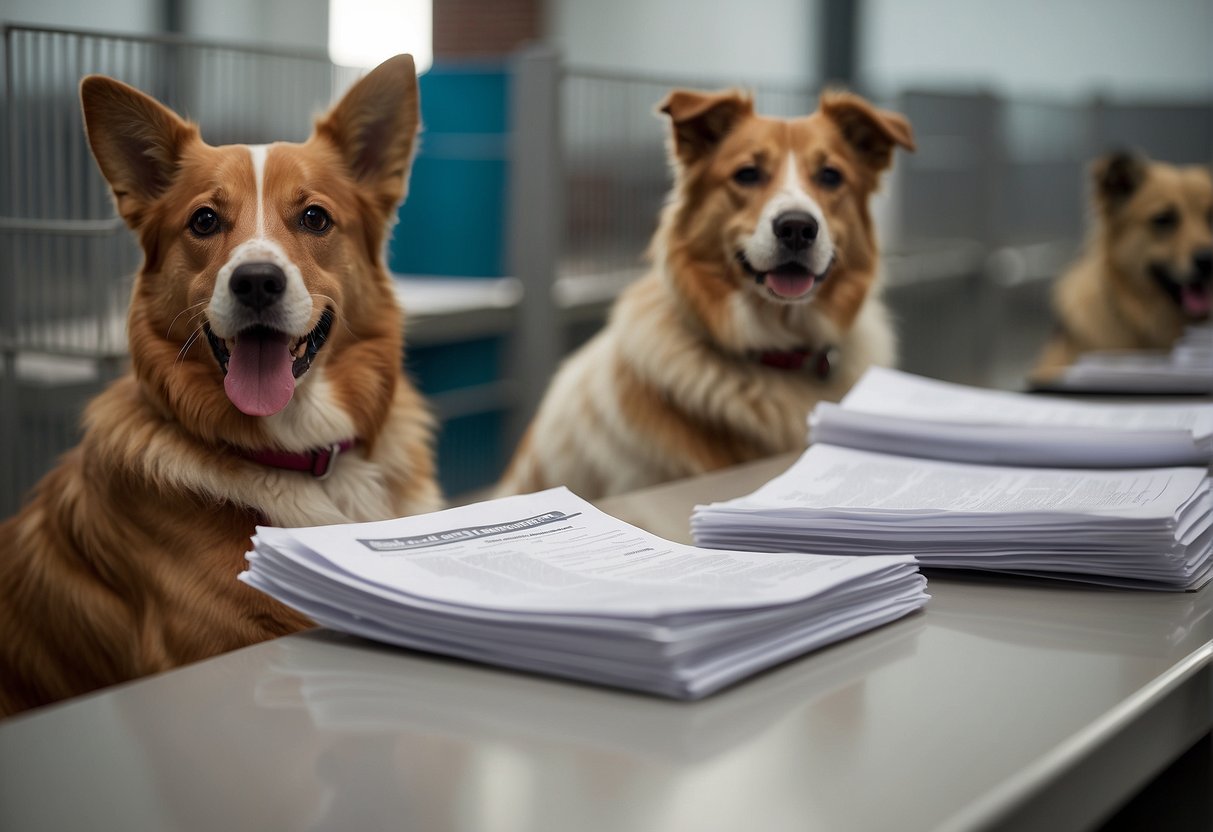
When you finalize a dog adoption, you’re not just adding a new member to your family—you’re completing a legal transfer of responsibility. Animal shelters and rescue organizations play a crucial part in this process, ensuring that all the legal documents are properly managed.
Responsibilities of Shelters in the Adoption Process
Animal shelters have a lot to handle when it comes to dog adoptions. They don’t just care for dogs; they also make sure that when you adopt a dog, all the legal i’s are dotted and t’s are crossed. Here’s a snapshot of what shelters typically do:
- Screening: Shelters screen potential adopters. This includes applications and sometimes home visits to ensure the relationship between you and your new dog starts off on the right paw.
- Paperwork: They handle essential paperwork like adoption agreements that detail the terms of the adoption and your responsibilities as an owner.
- Records: Shelters keep detailed records, which can include the dog’s medical history and any behavioral assessments they’ve performed. This gives you crucial information about your new pet’s needs.
How Rescue Organizations Facilitate Legal Transfers
Rescue organizations, including community-based groups, may operate differently from shelters but they are just as dedicated to the welfare of rescue dogs. Here’s what they typically cover:
- Transfer of Ownership: They issue documents that legally transfer ownership of the dog from the rescue group to you, ensuring the community knows who’s responsible for the pup.
- Post-Adoption Support: Some rescue groups stay in the picture even after the adoption, offering guidance and support to help you and your new dog settle into your life together in the United States.
Remember, these organizations are here to help you and your new canine companion forge a lasting, legally recognized relationship. Whether it’s a rescue dog that’s experienced rough waters or a shelter pup that’s been waiting for a family like yours, these groups are pivotal in making dog adoptions successful.
Legal Issues and Considerations
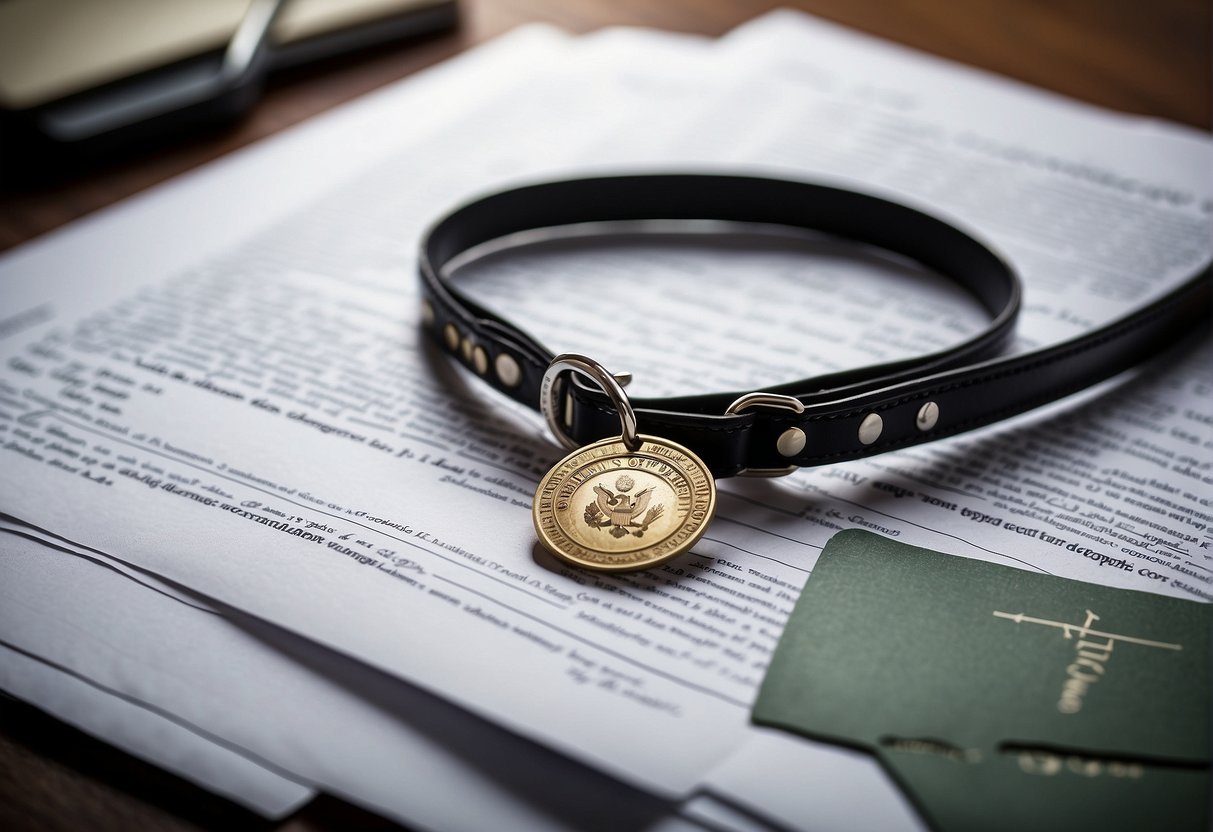
When you’re about to finalize a dog adoption, it’s like dotting the I’s and crossing the T’s on an important contract. You’ve got to make sure everything is in order so that you and your new dog can start your journey without a hitch.
Disclosure of the Dog’s Medical and Behavioral History
Before you finish the adoption process, the adoption agency or shelter should provide you with detailed records of the dog’s past medical and behavioral history. This transparency is crucial for a couple of reasons: it allows you to be fully aware of the health and temperament of the dog you’re bringing into your home, and it helps you prepare for any future needs they might have. Expect to receive a certified copy of the dog’s veterinary visits, vaccination record, and any known behavioral issues.
Understanding State-specific Adoption Laws
Each state has its own set of laws when it comes to dog adoption, so it’s smart to get to know them. If you’re unsure where to begin, consider consulting with an adoption attorney, who can guide you through your state’s specific requirements. These legal pros know all about things like ownership transfer documents and how long you’ve got to finalize any paperwork. Plus, they’re handy if there are any hiccups along the way.
Liability Concerns for Adopters
Once you adopt a dog, you’re responsible for them, and that’s kind of a big deal. You want to make sure that the adoption records clearly state the transfer of ownership to you. This is important because if your dog decides to chew up your neighbor’s fancy garden gnome, you’ll be the one they come knocking for. Liability concerns are often addressed in the adoption contract, outlining what you’re responsible for as the new owner of the dog. Make sure these terms are crystal clear to you before you sign on the dotted line.
Final Thoughts
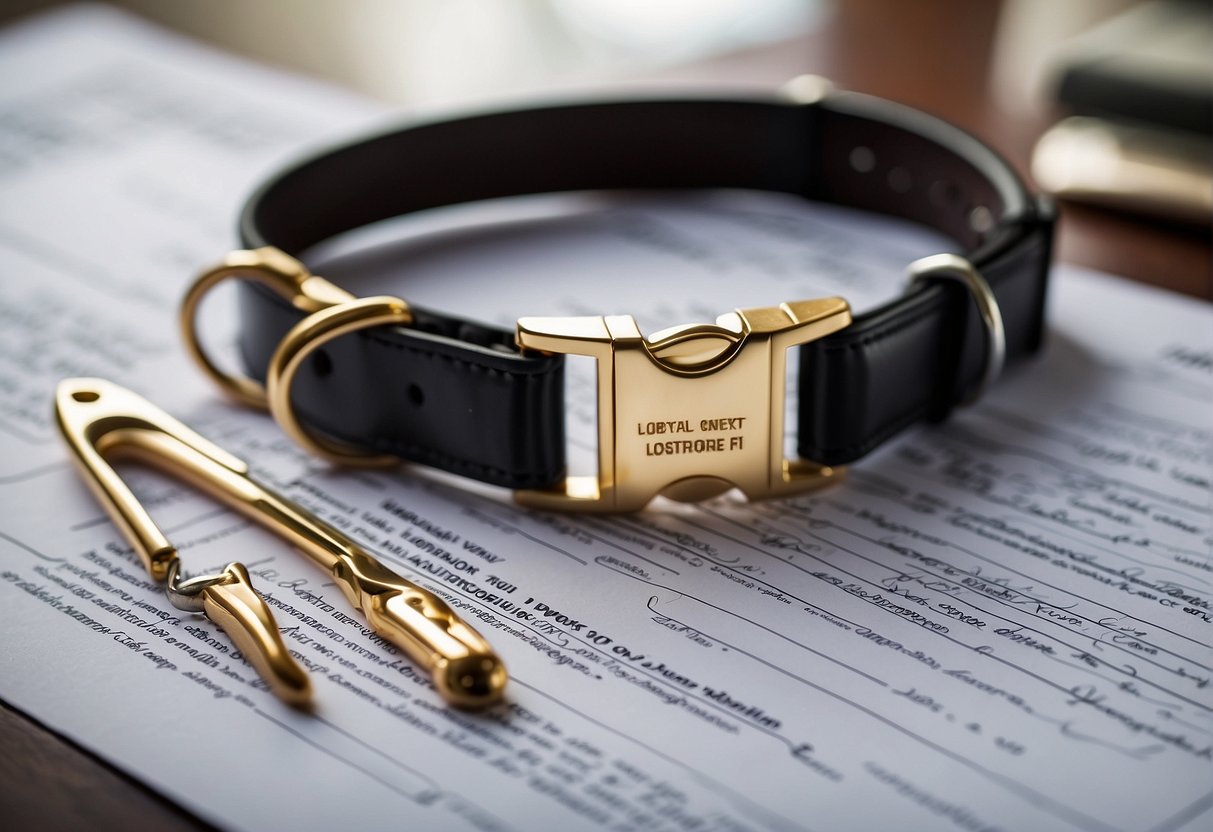
Adopting a dog is a sincere commitment, almost like adding a new member to your family. Before you bring your new companion home, make sure you have all the necessary legal documents squared away. This usually includes an adoption agreement detailing your responsibilities and the animal’s medical history. As part of the adoption process, you might also encounter a decree of adoption, which is the final legal step of making the dog officially yours.
Here are a few key steps to get ready for your dog’s arrival:
- Puppy-proof your home: It’s important to create a safe environment by removing any hazards.
- Prepare a designated space: Having a consistent space, like a crate, helps your dog settle in more comfortably.
- Schedule a vet visit: Check on your dog’s health, vaccinations, and discuss spaying/neutering if necessary.
- Establish a routine: Consistency with feeding, walking, and sleep schedules is crucial for your dog’s adjustment.
Remember that you’re not just preparing for your dog’s arrival, but also for a lifelong journey together. This includes training, socialization, and providing boundless love. Positive reinforcement is your best tool for teaching them the ropes of their new world. Don’t hesitate to get help from an adoption lawyer if you’re going through an international adoption or other complex scenarios.
Lastly, while you’re wrapping up the paperwork and setting up their new spot, think about their emotional needs, too. Take time to learn about their temperament and energy levels so that you can craft a life together filled with joy and companionship. And once you’re set, consider giving back by donating or volunteering at local shelters to support other dogs in need of homes.
